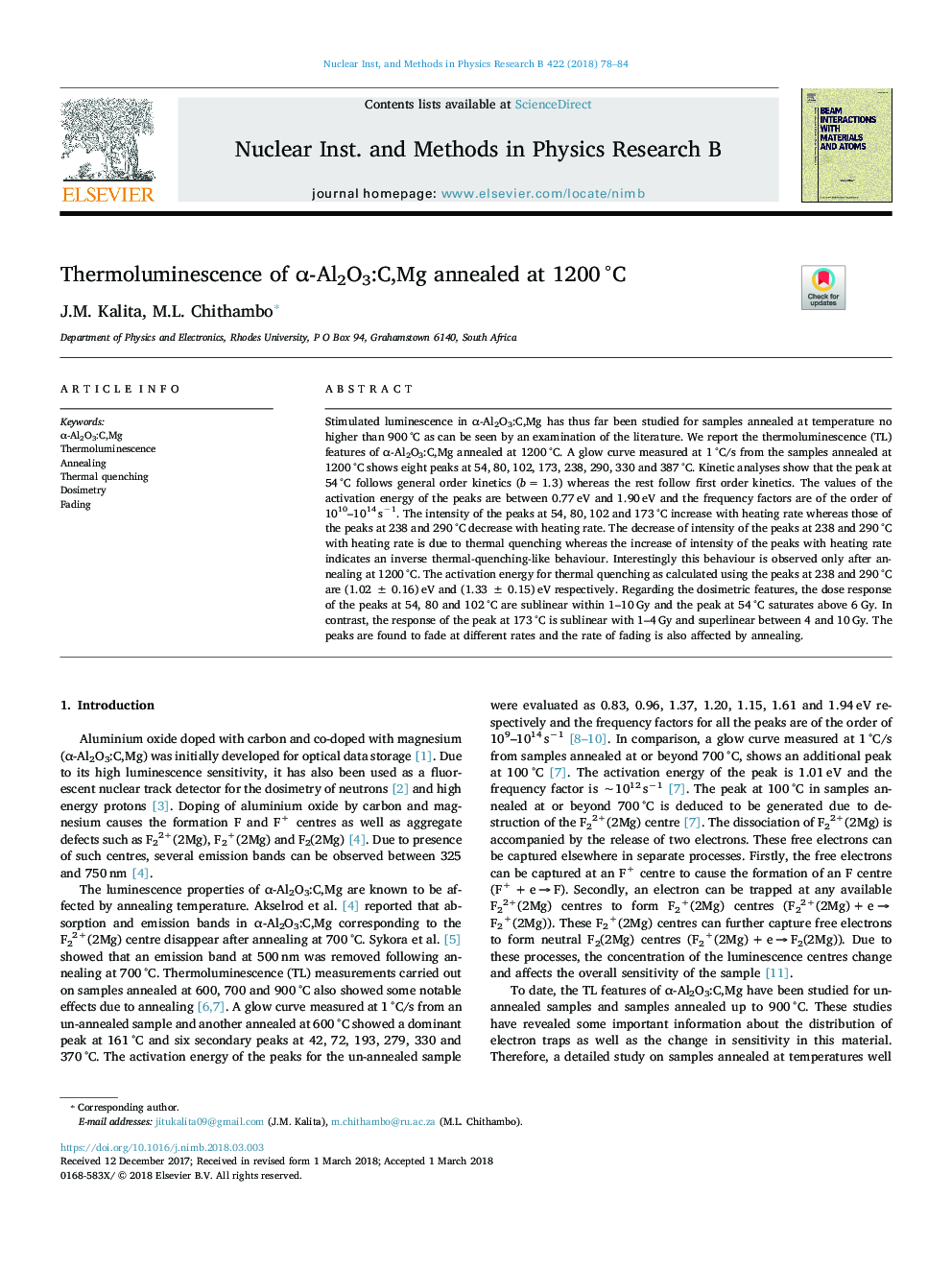| Article ID | Journal | Published Year | Pages | File Type |
|---|---|---|---|---|
| 8039219 | Nuclear Instruments and Methods in Physics Research Section B: Beam Interactions with Materials and Atoms | 2018 | 7 Pages |
Abstract
Stimulated luminescence in α-Al2O3:C,Mg has thus far been studied for samples annealed at temperature no higher than 900â¯Â°C as can be seen by an examination of the literature. We report the thermoluminescence (TL) features of α-Al2O3:C,Mg annealed at 1200â¯Â°C. A glow curve measured at 1â¯Â°C/s from the samples annealed at 1200â¯Â°C shows eight peaks at 54, 80, 102, 173, 238, 290, 330 and 387â¯Â°C. Kinetic analyses show that the peak at 54â¯Â°C follows general order kinetics (bâ¯=â¯1.3) whereas the rest follow first order kinetics. The values of the activation energy of the peaks are between 0.77â¯eV and 1.90â¯eV and the frequency factors are of the order of 1010-1014â¯sâ1. The intensity of the peaks at 54, 80, 102 and 173â¯Â°C increase with heating rate whereas those of the peaks at 238 and 290â¯Â°C decrease with heating rate. The decrease of intensity of the peaks at 238 and 290â¯Â°C with heating rate is due to thermal quenching whereas the increase of intensity of the peaks with heating rate indicates an inverse thermal-quenching-like behaviour. Interestingly this behaviour is observed only after annealing at 1200â¯Â°C. The activation energy for thermal quenching as calculated using the peaks at 238 and 290â¯Â°C are (1.02â¯Â±â¯0.16)â¯eV and (1.33â¯Â±â¯0.15)â¯eV respectively. Regarding the dosimetric features, the dose response of the peaks at 54, 80 and 102â¯Â°C are sublinear within 1-10â¯Gy and the peak at 54â¯Â°C saturates above 6â¯Gy. In contrast, the response of the peak at 173â¯Â°C is sublinear with 1-4â¯Gy and superlinear between 4 and 10â¯Gy. The peaks are found to fade at different rates and the rate of fading is also affected by annealing.
Related Topics
Physical Sciences and Engineering
Materials Science
Surfaces, Coatings and Films
Authors
J.M. Kalita, M.L. Chithambo,
